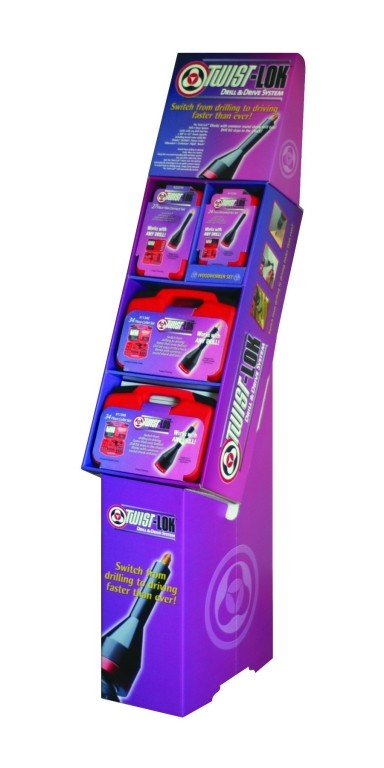When you think of package printing, you usually think of printing in mass quantities—hundreds if not thousands of product containers, boxes, etc., usually run on offset flexographic or lithographic presses that make such run lengths economical. Flexo, in particular, is widely used for packaging, because it’s able to print at very high speeds on a wide range of materials.
Even so, in recent years many shops with digital wide-format presses have found a role for their tools in package printing. Sometimes, the job just doesn’t require a really long run—as in the initial prototyping of the packaging for a new product, for instance. Or maybe a customer needs only a few hundred pieces but needs them fast to get them to a trade show in time. Digital presses are the only cost-effective choice in these scenarios. Furthermore, digital-print providers are constantly improving their ability to print on different types of substrates, making them better able to reproduce or mimic a package that will eventually be printed on another kind of press.
We talked to four digital print shops that have managed to carve out a place in the packaging market through their wide-format tools—we’ve gathered information from each on who their customers are and the kinds of jobs they do. Here's a look at shop one (check back for more installments).
Digital Impact: Executing Tight Turns
The VT Group in Yeardon, Pennsylvania, comprises three divisions: VT Graphics, a flexographic prepress and plate vendor, founded in 1966; Digital Impact, a digital-print and die-cutting shop specializing in prototypes and point-of-purchase displays, which started in 2004; and the Ocean Design Group, launched in 2006, a full-service design studio. In addition to serving outside customers, Ocean Design also provides all the rendering and graphics for the other two divisions.
“VT Graphics has been focused primarily on corrugated packaging since its inception,” says president Robert Mormile. “We have about 55 employees in our three buildings, all of which are tied together via fiberoptics. From an infrastructure standpoint, we all talk to each other.”
Earlier this decade, the operators of VT Graphics recognized that there was a market for short-run package printing that wasn’t being served. Many of their customers, says Mormile, sometimes only wanted 250 to 500 items. “We were primarily in the corrugated industry,” he says, “and short-run packaging was not being addressed because of all the tooling and setup required.”
With that market in mind, Digital Impact was launched with an HP Scitex FB6700 (then badged as the Scitex CorJet). “With the CorJet,” says Mormile, “instead of manufacturing all the tooling, die cut, and plates a traditional press would need, we could print direct to corrugated, die-cut it—we also have two DCM die cutters—and deliver the product printed, cut, and out the door on skids. Then if the product succeeds, we can manufacture the printing plates and go to the larger run.”
Advertisement
All of Digital Impact’s final product comes off the FB6700. They send the printer a combination of Adobe Illustrator and Photoshop files, flattened and color managed and saved as EPS files. “That’s something a lot of companies aren’t doing,” says Mormile, “but we’ve mastered how to build these files.”
“By far, the bulk of what we print,” Mormile continues, “is on corrugated cardboard—probably 80 percent.” The company also uses the FB6700 for signage, which it typically prints on Coroplast or SBS board.
What makes a run short enough to be appropriate for the FB6700? Mormile says it really depends on the yield of the sheet and to what other kind of press you’re comparing it. “We run a 63 x 112-inch sheet through our machine,” he explains. “If we need 1000 pieces and can run two-up per sheet, it makes sense to run them on 500 sheets. If we’re doing risers for countertop displays, on the other hand, we can compete on runs up to 2000. In that case, we’re competing against a litho press, and the setup charges are too costly for them to manufacture those low quantities.”
The company particularly prides itself on being able to turn a job around under a tight deadline. One such project was a group of packages and display units produced for Twist-Lok Drill & Drive Systems. The customer found Digital Impact via an Internet search and called on a Saturday. He brought the products in the next Monday—three consisted of plain, red, plastic cases with parts inside, and one came in a clear, plastic “blister” that had no backing yet. Twist-Lok needed packaging and displays for a trade show coming up within the next couple of weeks.
“We developed all the graphics,” recalls Mormile. The shop printed the wraparounds for the red cases on E-flute corrugated material and then the displays on B-flute material. From the FB6700, they went to the laminator, then to the cutting table. “We probably did 250 or 500 trays with six items in each,” says Mormile, “plus a floor-standing display with three different items. By Thursday of that same week, we had the complete job done and ready to go.”
Digital Impacrt
www.digitalimpac.com
Advertisement


 Best of Wide Format2 months ago
Best of Wide Format2 months ago
 Best of Wide Format2 months ago
Best of Wide Format2 months ago
 Blue Print3 weeks ago
Blue Print3 weeks ago
 Best of Wide Format2 months ago
Best of Wide Format2 months ago
 Best of Wide Format2 months ago
Best of Wide Format2 months ago
 Best of Wide Format2 months ago
Best of Wide Format2 months ago
 Best of Wide Format2 months ago
Best of Wide Format2 months ago
 Best of Wide Format2 months ago
Best of Wide Format2 months ago















